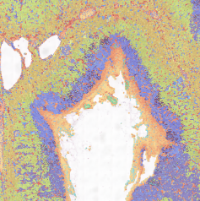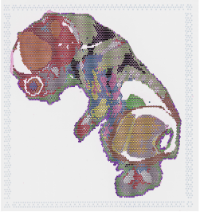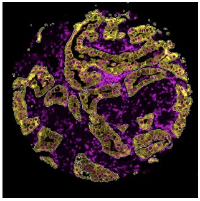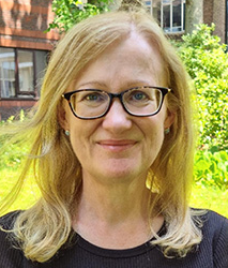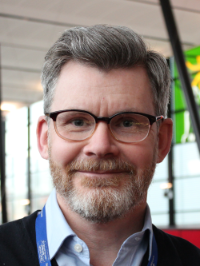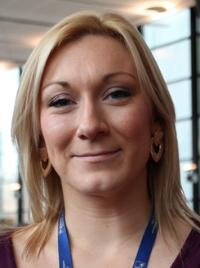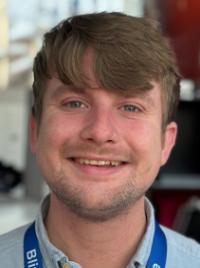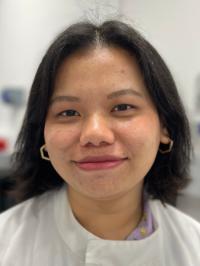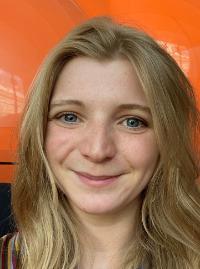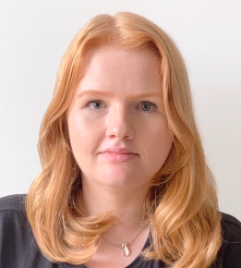Genome Centre
QMUL Genome Centre is the genomics core facility at Queen Mary University of London, supporting researchers since 2000.
We work with academic (both with and without Queen Mary affiliation) and corporate partners on a not for profit basis to achieve their genomics research aims. Ours is a highly collaborative model, providing a custom service, offering advice on design and interpretation as required.
We are always interested in trying novel approaches to genomic challenges.
All Genome Centre services are booked through iLab - What is iLab?
Single Cell Genomics
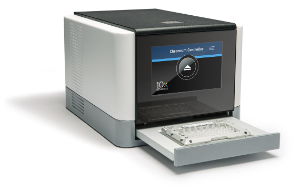
Single cell genomics is used to unpack cell heterogeneity, often within a tissue or cancer biology. We have been running chemistry from 10X genomics since 2018. A modular approach means whole transcriptome information can be augmented with a combination of T and B cell receptor profiling, surface bound protein, and chromatin accessibility.
Talk to the team about single cell genomics
| Application | Protocol | Species | Description |
|---|---|---|---|
| Transcriptomics | 3' tag Sequencing | Any | Poly A priming used to generate a 100bp tag from the 3' end of each cell's transcript |
| Transcriptomics | 5' tag Sequencing | Any | Poly A priming used to generate a 100bp tag from the 5' end of each cell's transcript |
| Epigenetics (Chromatin accessibility) | Assay for Transposase-Accessible Chromatin (ATACseq) |
Any |
Open chromatin is accessible to tranposase enzyme generating cell specific libraries only in these regions |
| Transcriptomics and Epigenetics (Chromatin accessibility) | Multiome | Any | ATACseq and 3' libraries generated from each cell |
| Immunobiology | T Cell Receptor Profiling | Human or Mouse | PCR primers used to amplify the VDJ region from cDNA generated by the 5' protocol |
| Immunobiology | B Cell Receptor Profiling | Human or Mouse | PCR primers used to amplify the VDJ region from cDNA generated by the 5' protocol |
| Proteomics | Surface Marker Profiling (CITESeq, feature barcoding) | Any | DNA barcoded antibodies used to measure protein level. Compatible with either 5' or 3' transcriptome libraries |
Spatial Biology
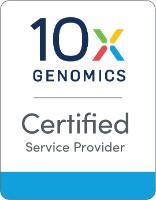 Using Spatial biology technologies it is possible to analyse RNA and Protein whilst retaining their two dimension position information in the original tissues. We can offer solutions from both 10X Genomics (Visium Chemistry), for which we are the only certified supplier in the South of England, and Nanostring (GeoMX DSP and CosMX)
Using Spatial biology technologies it is possible to analyse RNA and Protein whilst retaining their two dimension position information in the original tissues. We can offer solutions from both 10X Genomics (Visium Chemistry), for which we are the only certified supplier in the South of England, and Nanostring (GeoMX DSP and CosMX)
Talk to the team about spatial biology
| Technology | Tissue Type / Species | Analyte | Chemistry | Feature Size & Number |
|---|---|---|---|---|
|
Visium HD - 10X Genomics
|
Fresh frozen or FFPE Human or Mouse |
RNA (~18,000 human genes, ~19,500 mouse genes) | Probe based sequencing |
2uM feature 11 million per each 6.5 X 6.5mm capture area |
|
Visium - 10X Genomics
|
Fresh frozen Any Species |
RNA (full transcriptome) |
PolyA primed 3' tagged sequencing |
50 micron 4992 per each 6.5 X 6.5mm capture area |
|
FFPE Human or Mouse |
RNA (~18,000 human genes, ~19,500 mouse genes) | Probe based sequencing |
50 micron 4992 per each 6.5 X 6.5mm capture area |
|
|
GeoMX - Nanostring
|
Fresh frozen or FFPE Human or Mouse |
RNA (~18,000 human genes, ~ 21,000 mouse genes) |
Probe based sequencing
|
100 to 600 micron regions of interest (ROI) Up to 192 ROI per run |
|
Fresh frozen or FFPE Human or Mouse |
Protein (panels targets up to 576) | Nucleotide tagged antibody sequencing |
100 to 600 micron regions of interest (ROI) Up to 192 ROI per run |
|
|
cosMX - Nanostring
|
Fresh frozen or FFPE Human or Mouse |
Human Universal Cell Characterization Panel (1000 RNA) Human Discovery Panel (6000 RNA) Human Whole Transcriptome Panel (18000 RNA) Mouse Neuroscience Panel (1000 RNA) |
In situ hybridisation |
Single cell 100s thousands per tissue section |
RNA Analysis
We run a range of different platforms and implement or develop methods that cover all scales of genomic questions.
Talk to the team about RNA profiling
| Technology | Assay | |
|---|---|---|
|
|
Next Generation Sequencing - Illumina NovaSeq, NextSeq, and MiSeq |
Whole Transcriptome Analysis, options to profile protein coding RNA, total RNA and miRNA from bulk samples. See our guide to RNA seq |
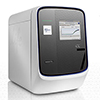 |
Real-time PCR - ABI QuantStudio 7 Flex Real-Time PCR System |
qPCR (real time PCR) is still the gold standard to analyze individual RNA. Learn more about our qPCR service . Find out about booking time on the QS7 Equipment booking guide |
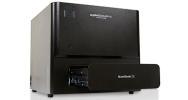 |
Digital PCR - ABI QuantStudio Absolute Q Digital PCR System
|
Digital PCR enables a finer scale differential between samples that traditional qPCR. Find out about booking time on the Absolute Q Equipment booking guide |
DNA Analysis
We run a range of different platforms and implement or develop methods that cover all scales of genomic questions.
Talk to the team about spatial DNA analysis
| Technology | Assay | |
|---|---|---|
|
|
Next Generation Sequencing - Illumina NextSeq and MiSeq |
Whole Genome Sequencing (WGS) |
| Whole Exome Sequencing (WES) using Agilent Sure Select or similar | ||
| Targeted Region Sequencing with either Fluidigm Access Array or Agilent Sure Select | ||
| Metagenomics with either 16s DNA or whole genome sequencing | ||
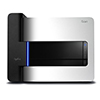 |
Arrays - Illumina Bead Arrays |
To run genome wide association studies (GWS) Genome Wide or Custom SNP arrays |
 |
Real-time PCR - ABI QuantStudio 7 Flex Real-Time PCR System |
Genotyping individual single nucleotide polymorphisms (SNP) in large cohorts we use SNP genotyping Taqman |
 |
Digital PCR - ABI QuantStudio Absolute Q Digital PCR System
|
Digital PCR enables a finer scale differential between samples that traditional qPCR. Find out about booking time on the Absolute Q Equipment booking guide |
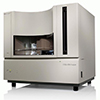 |
Sanger Sequencing - ABI 3730 |
Sequencing individual plasmids or PCR products see our Sanger Sequencing guide |
 |
Microsatellite (Short Tandem Repeat (STR)) Genotyping - ABI - 3730 |
Off the shelf panels can be used for human identification and cell line validation. Custom panels are often used to study population genetics |
Epigenome Analysis
Understanding the control of gene expression through DNA methylation and chromatin accessibility is key to decoding cell circuits. We offer a range of scales to study DNA methylation of which the most cost effective approach is using Infinium arrays form Illumina targeting hundreds of thousands of GpG sites.
Talk to the team about epigenomics
| Technology | Assay | |
|---|---|---|
|
|
Next Generation Sequencing - Illumina NextSeq and MiSeq |
DNA Methylation Analysis Whole Genome Bisulphite Sequencing |
|
DNA Methylation Analysis (WGBS)Reduced Representation Bisuplhite Sequencing |
||
|
DNA Methylation Analysis (RRBS)Targeted Bisulphite |
||
|
DNA Methylation Analysis Targeted Region Sequencing with Fluidigm Access Array or individually |
||
 |
Arrays - Illumina Bead Arrays |
DNA Methylation Analysis Infinium EPIC Arrays (human 850,000 CpG sites) Infinium mouse methylation arrays (mouse 265,000 CpG sites) |
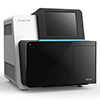 |
Next Generation Sequencing - Illumina NextSeq and MiSeq |
Chromatin Accessibility Assay for Transposase-Accessible Chromatin (ATACseq). |
Bioinformatics
Genetics and genomics studies produce ever larger data sets. Having a strategy to analyse the results of a project is all important.
The Centre can help with a guided analysis for RNAseq, Single Cell Sequencing, and Spatial Genomics using a commercial solution from Partek (Partek Flow) for which QMUL has a cloud based instance. We run a preliminary analysis and provide a user login to view and interrogate the results. Partek Flow requires no prior coding experience and uses a point and click based interface making it a great solution for many users.
For more bespoke applications we have bioinfomatics support to answer novel questions and to develop new tools. We take advantage of the QMUL High Performance Cluster (Apocrita) and run computationally intense processes in order to analyse data that cannot be analysed on a standalone desktop. We have experience in Bash, R and Python programming languages and associated packages, and have worked on bespoke analyses for Flow Cytometry, DNA sequencing (variant calling), single cell and spatial transcriptomics and metagenomics to name a few. We are open to and love to analyse new data types in order to answer specific biological questions.
Talk to the team about bioinformatics
| Commonly used workflows in Partek | |||
|---|---|---|---|
| Application | Partek web tutorial | Our workflow | Examples |
|
RNA Sequencing |
Seq QC, alignment, PCA, differential gene expression, pathway analysis |
||
|
Single Cell Genomics |
Initial processing with Cell Ranger (10X Genomics), Seq QC, PCA, UMAP, clustering, differential gene expression, pathway analysis | ||
|
Spatial Transcriptomics |
Initial processing with Space Ranger (10X Genomics), Seq QC, PCA, UMAP, clustering, spatial overlay, differential gene expression, and pathway analysis | ||
Meet our team of experienced scientists
|
|
|
|
|
Professor Patricia Munroe, Director Patricia became Director of the Bart's and The London Genome Centre in 2016, taking over from David vanHeel. Patricia is internationally renowned geneticist with research interests in cardiovascular and blood pressure phenotypes. |
Dr Charles Mein, Manager Charles studied Genetics at undergraduate level before working on the Genetics of Type 1 Diabetes for his Dphil. He was recruited in 2000 to establish the Centre which focused on the genetics of complex disease. Under his leadership the Centre has kept pace with the rapid technological changes in the genomics field. |
Eva Wozniak, Deputy Manager Eva joined our team in 2011 after working on research into women’s cancers at the Institute for Women’s Health at UCL for 6 years. Her areas of expertise are many, covering all of the activities we specialise in. She has established many services at our Centre, including Spatial Genomics, Single Cell genomics, and RNA seq. She's a member of the QMUL Technician Commitment Steering Group. |
|
|
|
|
|
Ben Jones, Senior Technician Ben has been part of our team since the summer of 2023, joining us with previous stints at Liverpool University and KCL. His current areas of responsibility include single cell, and spatial genomics along with managing service contracts. |
Salina Thapa, Technician Salina joined our team, in Jun 2022, having recently gained her MSc Medical Microbiology followed by service in one of the COVID testing centres. She's now an expert in Illumina Infinium protocols, and is developing competence in transcriptomics. |
Bryna McCarthy, Technician Bryna joined the team us at the end of June 2022, having previously worked with the BGI in their COVID testing facility. She has an MSc in "Cancer, Molecular Pathology and Genomics" from Barts Cancer Institute. She's now a wealth of experience in transcriptomics, metagenomics, and genotyping array protocols.
|
|
|
|
|
|
|
Bethany Hughes, Bioinformatician Beth completed her PhD in 2024 having studied senescence in fibroblasts at the single cell level (Hughes et al 2024). She's currently developing methods for the analysis of spatial transcriptome data along with running the Blizard Bioinformatics Forum |
|

Genome Centre
Faculty of Medicine and Dentistry
Queen Mary University of London
Blizard Institute, 4 Newark Street, London, E1 2AT
Tel +44 207 882 2055 (Manager)
Tel +44 207 882 2058 (Lab Staff)
Or find us on Google Maps - search "Genome Centre"
